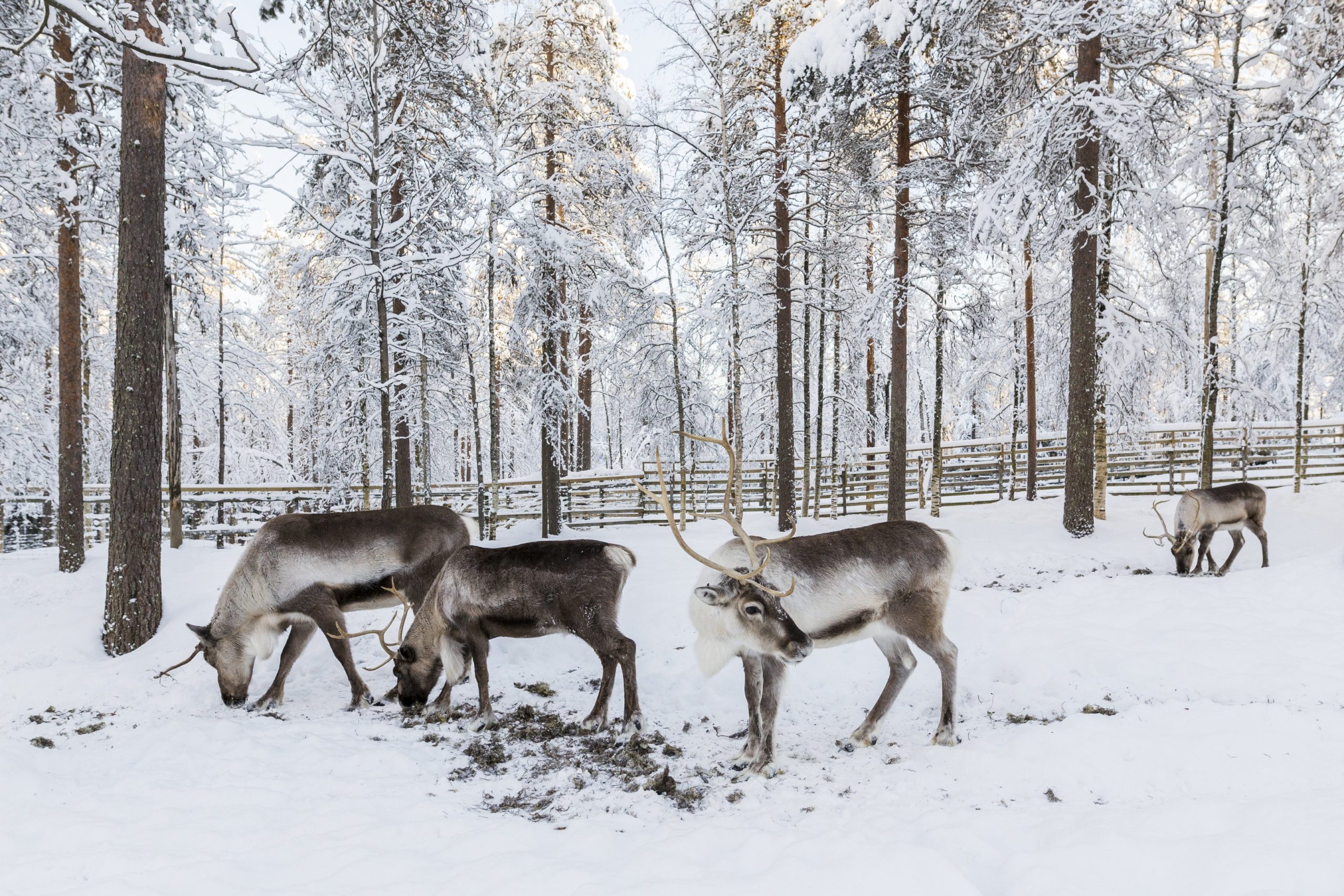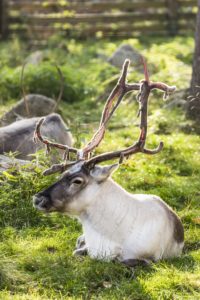
Reindeer
LIVING HABITS
The reindeer is a semi domestic animal, tamed from the mountain reindeer. While most of the reindeer migrate wild in the forests and mountains, every reindeer is owned by a reindeer herdsman. The reindeer inhabit the reindeer herding area from the regions of Oulu to the northernmost parts of Lapland. The reindeer feed on lichen, mushrooms, hay and grassy plants as well as the leaves of bushes and trees. They migrate according to food supply from summer to winter pastures. In the summer they prefer lush swamp areas, in the fall they move through mushroom-growing forests further up to moorlands for the winter, eating lichen from under the snow. The frugal winter, nowadays, has led the herdsmen to feed reindeer with additional food supply, particularly in the southern parts of Lapland. The reindeer gather into herds during the worst insect season of the summer, and again in the fall as the reindeer bulls select females for mating. Reindeer owners take advantage of these gatherings; in the mid-summer they do reindeer round-ups for marking the calves, and in the autumn they do the round-ups for slaughtering some of the reindeer.
PROTECTION
The reindeer is a semi domestic animal, owned by a herdsman, and thus not a game animal for hunting.
ADAPTING TO WINTER
The reindeer is extremely well adapted to the northern winter environment. The fur of hollow guard hair insulates from the cold, and the subcutaneous fat layer beneath the skin both warms and gives nutrition, when food is getting sparser during the winter. Reindeer hooves are wide in shape, and in the winter the paws shrink and tighten, exposing the rim of the hoof even wider, which cuts into the ice and crusted snow to keep it from slipping. This also enables them to dig down through the snow to their favourite food, lichen. The reindeer have an extremely keen scent; they can sense lichen from under 1 meter of thick snow covering, showcasing their excellent digging skills.
Reindeer
Rangifer tarandus tarandus
Class: Mammalia – Mammals
Order: Artiodactyla – Cloven-Hoofed Animals
Family: Cervidae – The Deer Family
Size: Weight: 65-160kg, stands at 90-110cm at the withers, males notably larger than females.
Breeding: Heat: September-October, gestation period: 7 months, offspring: 1 at a time. Independent in 1 year, females in good condition reach sexual maturity in 6 months, males in 1,5 years.
Lifespan: 10 – 15 years.


Did you know…
Did you know, that the female reindeer is the only other deer animal, in addition to the female wild forest reindeer, to boast antlers? The males, the reindeer bulls, need their antlers during the mating season to fight for their territories. The reindeer bulls’ antlers fall off at the end of the year, and the females’ first in the spring. The female with its calf will thus be able to keep the reindeer bulls away from the lichen feeding grounds throughout the winter.




